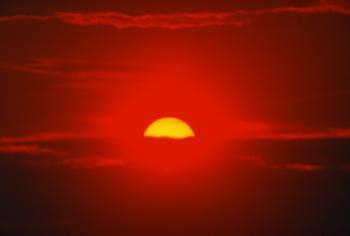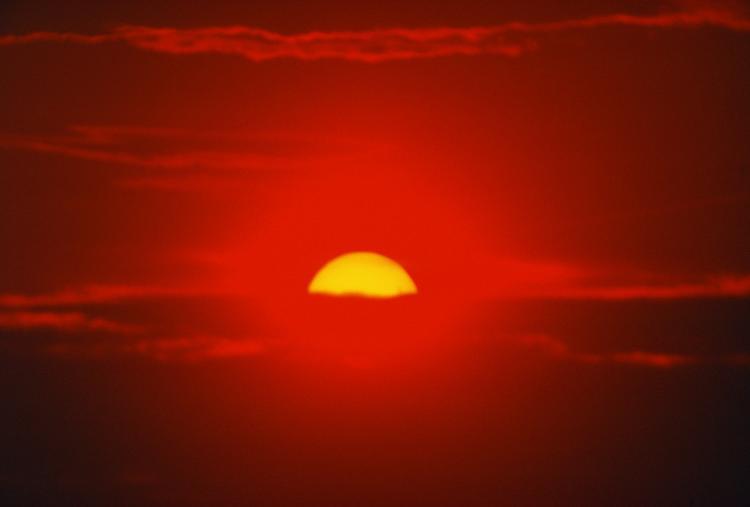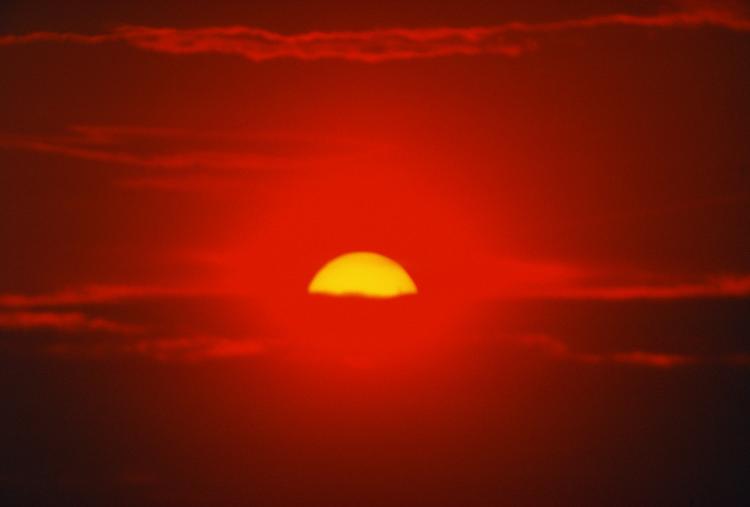The optical phenomenon basically presents itself as a pure green sliver, usually at sunset, and it’s produced under certain atmospheric conditions. Although it can be observed at any latitude, it does require a patient or lucky observer.
At dusk, when the sun is aligned with the horizon, its rays are reflected into the Earth’s atmosphere, acting as a prism. When the day comes to a close, it’s already spectacular enough to see the sun pinching together, turning red and orange, hiding itself in the horizon as we witness a beautiful sunset. But wouldn’t it be interesting to add a green flourish to this already colorful palate?
In a typical sunset, colors at the lower end of the light spectrum (yellow, orange, and red) are quite common, while the higher frequency colors like green and blue are rarely seen. However, these higher frequency colors begin to show themselves more clearly just before the sun disappears below the horizon. While it’s practically impossible to distinguish violet and blue rays (although it’s also been relatively well documented), with a little luck and patience the green ones can be observed.
Green Hues
Of course, at the height of twilight it could never be called a “green sun,” given that the phenomenon most often reveals itself at the last sliver of daylight. As this visual spectacle often lasts no more than a few seconds, it’s more appropriately labeled the “green flash.”
While the green flash typically only reveals itself at sunset, in the Orient, the phenomenon is also observable at sunrise. In fact, some reports find that the green flash can be seen at virtually any time of day. The phenomenon doesn’t depend only on existing conditions at the surface, but also on those in the high atmosphere.
Making for an interesting composition, the green ray can be observed when other celestial bodies over the horizon are photographed, like the planet Venus. Generally, the green color is seen in the top part of the sun and red at the bottom.
Sometimes, by way of the same phenomenon of refraction, the flash can be seen separated from the descending sun, “floating” over the horizon. While the phenomenon is usually brief, the green ray can be seen for 15 minutes or so, and it has even been known to last up to half an hour.
One of the first documented descriptions of the green flash was in 1873 by David Winstanley, who described a green ray emerging from the upper segment of the sun, completely extended toward the top and the bottom from the center, producing a momentary and intense visible light. Ten years later, Winstanley published another description of a green flash from 1865, by William Swan, over a mountain in Rigi.
“The very first rays, although necessarily proceeding from the comparatively obscure limb of the sun, were dazzlingly brilliant, and of a superb emerald green colour,” wrote Swan.
Conditions for Viewing
Generally, the conditions required to produce the green ray are a clear and full horizon that is favorable for the dispersion and absorption of the solar light by air molecules in the atmosphere. These conditions are frequently found in tall mountains, and in clear skies like in Egypt.
Another prime location for viewing the green flash is on the open sea. Perhaps this is why it receives mention in the film Pirates Of The Caribbean: At World’s End, where the green flash is said to signify a trapped spirit’s release from Davy Jones’s Locker.
While that explanation is surely one of cinematic invention, long ago it was believed that the green flash was a physiological phenomenon that took place in the eye rather than in the sky. This understanding persisted until the invention of photography, when this precious ray was clearly illustrated.






